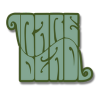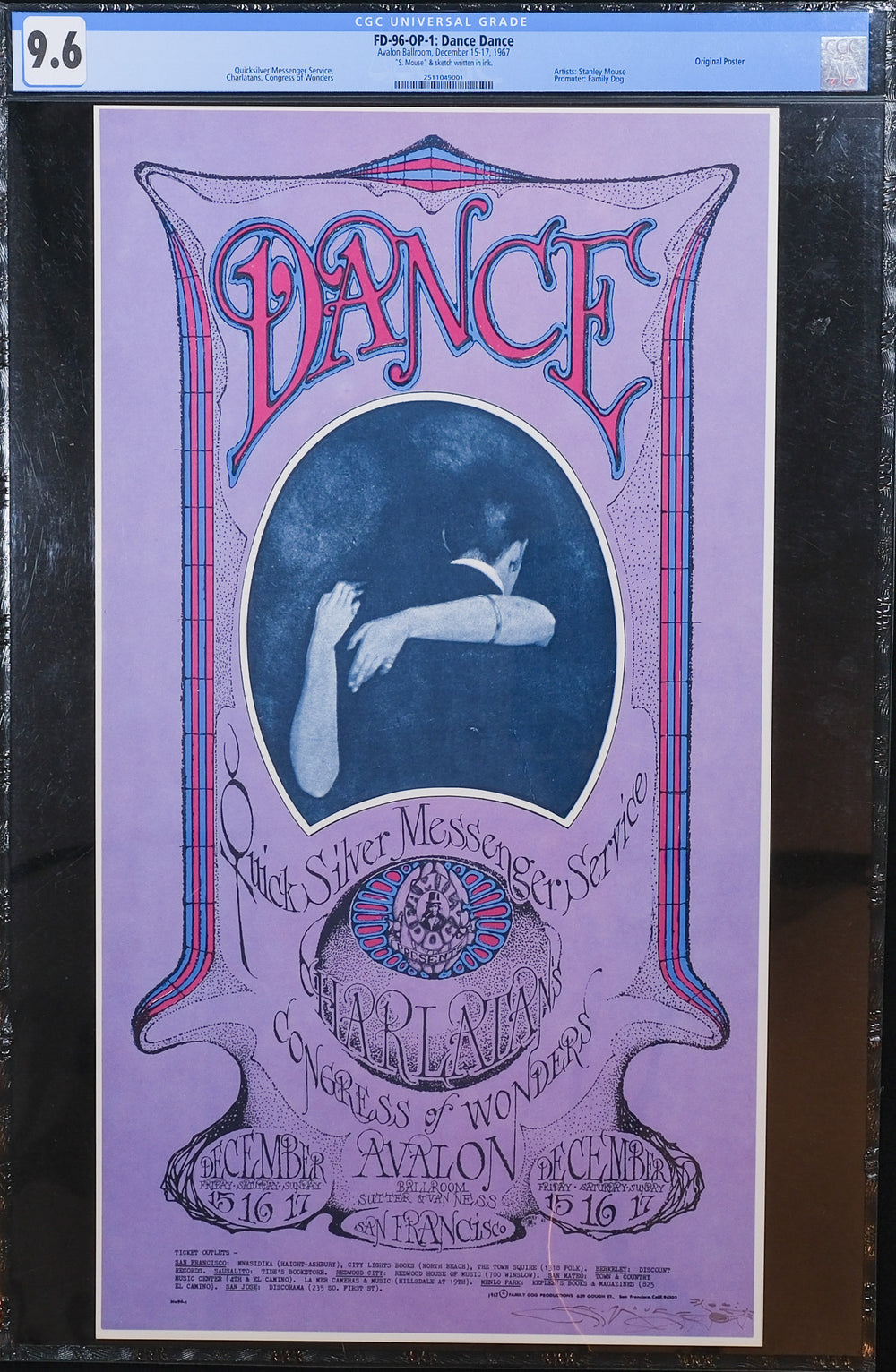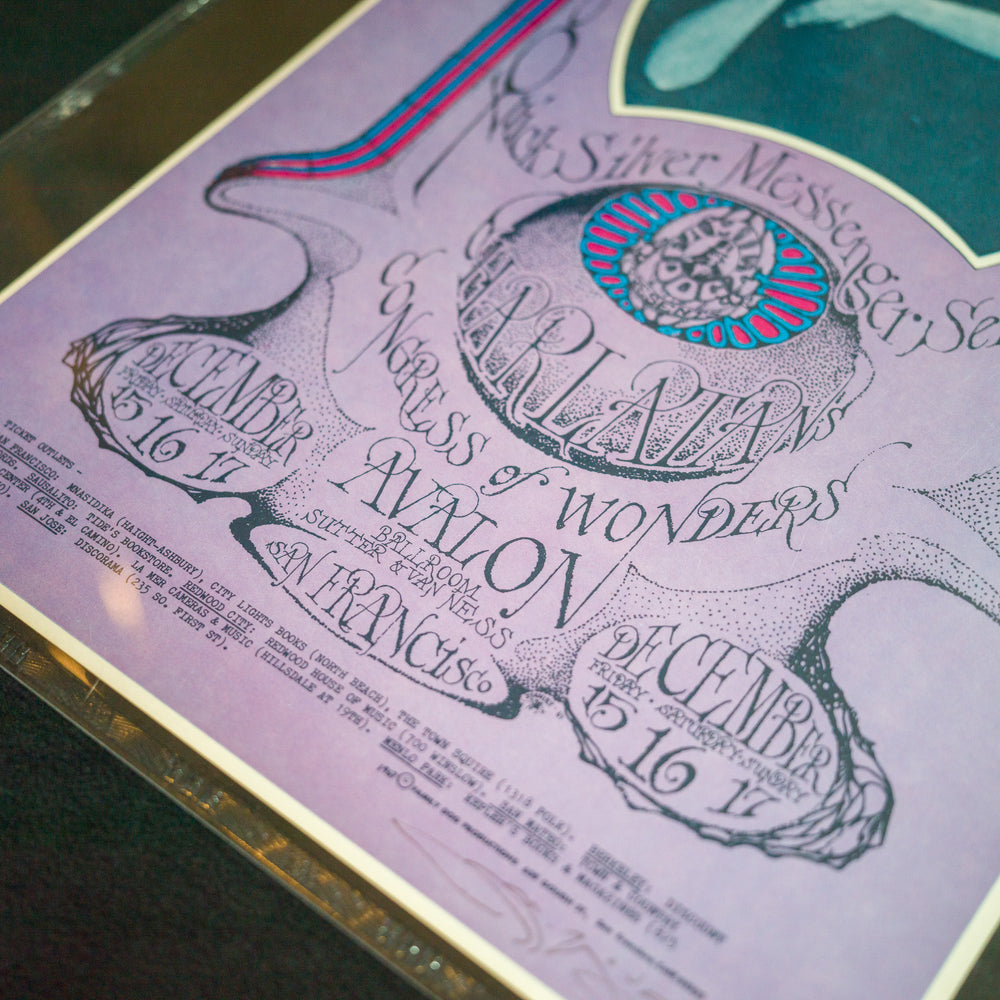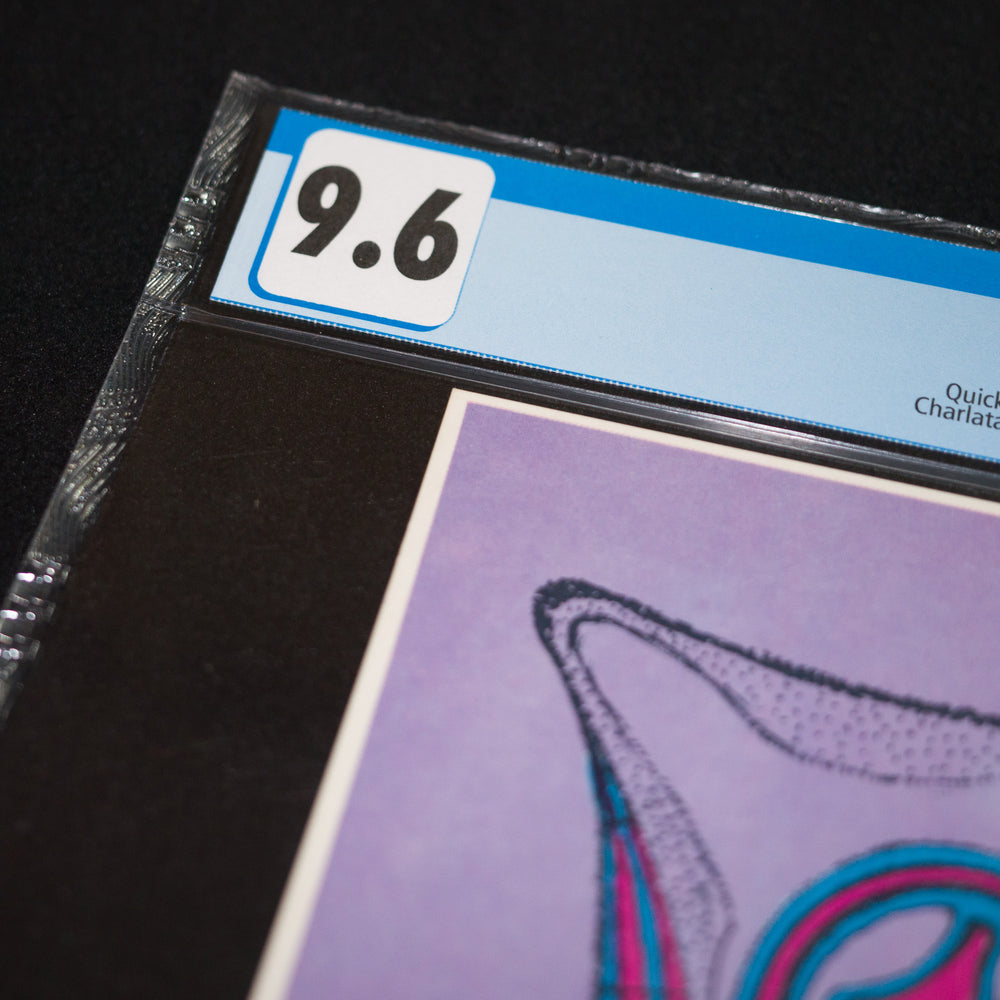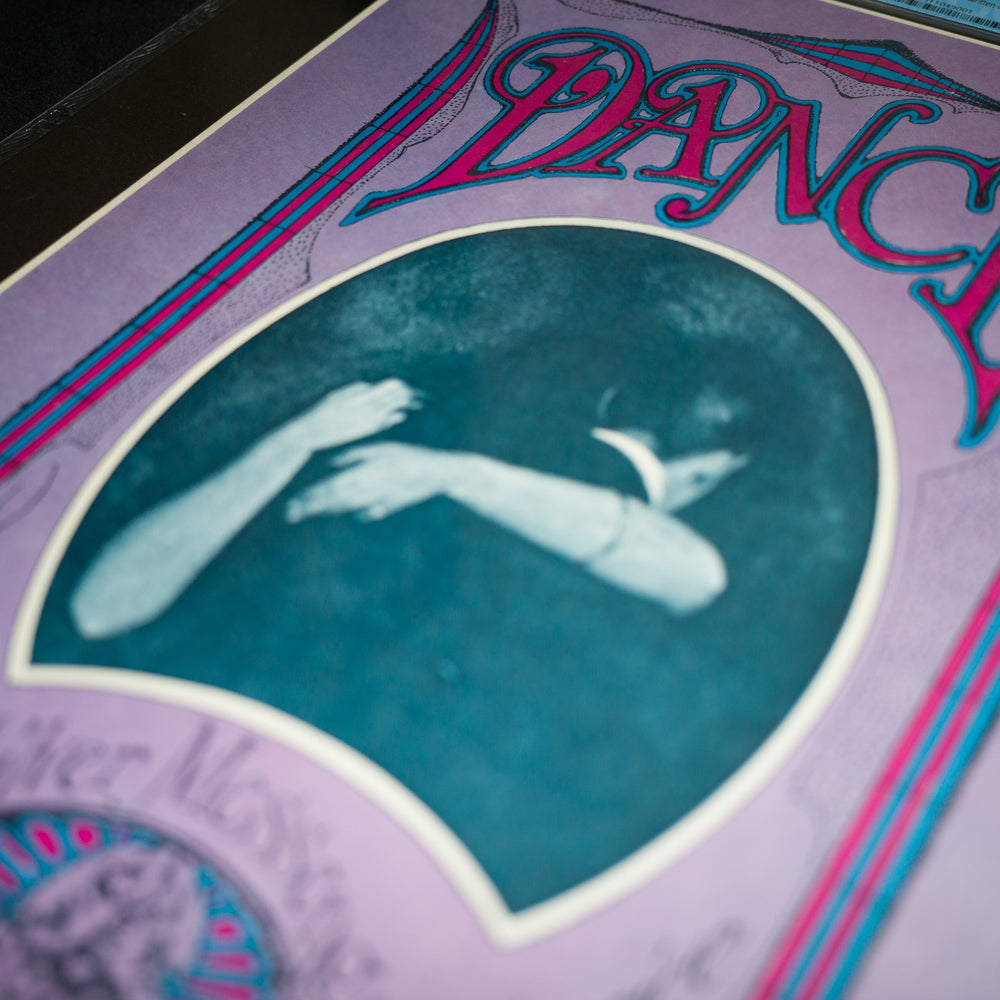Introduction
Close your eyes. Imagine the Fillmore Auditorium in 1967. The air is thick with anticipation, a potent blend of patchouli, sweat, and the promise of something mind-bending. The crowd pulses like a single organism, waiting for the sonic alchemists to take the stage. Then, the lights dim, a spotlight cuts through the haze, and Quicksilver Messenger Service explodes into being.
But before the music even hits, the journey begins with a visual incantation: Stanley Mouse's 1967 Quicksilver Messenger Service poster. Forget your typical gig flyers; this is a gateway drug to a psychedelic wonderland.
Key Features
- Artist: Stanley Mouse
- CGC Graded 9.6
- Year: 1967
- Edition Size: FD-96 OP-1
- Numbering: NA
- Signature: NA
- Dimensions: Approximately 14" x 20"
- Material: Original Screen Print
- Venue: The Fillmore Auditorium
The Artist: Stanley Mouse
Stanley Mouse, also known as Stanley George Miller, is an American artist best known for his psychedelic rock concert posters and album covers. He was an integral part of the San Francisco music scene in the 1960s and 70s, where he created iconic artwork for bands like the Grateful Dead, Janis Joplin, Jefferson Airplane, and Quicksilver Messenger Service.
The Band: Quicksilver Messenger Service
Hailing from San Francisco, Quicksilver Messenger Service weren't your typical 60s rock band. They were a sonic kaleidoscope, a swirling vortex of blues, rock, and psychedelia, all channeled through the twin-guitar assault of John Cipollina and Gary Duncan.
Imagine this: the Fillmore Auditorium in 1968, packed with tie-dye-clad bodies swaying to a pulsating rhythm. On stage, Quicksilver unleashes their sonic magic. Cipollina's searing blues licks intertwine with Duncan's intricate melodies, weaving a tapestry of sound that takes you on a journey through cosmic landscapes and forgotten dreams.
They weren't afraid to experiment. Jams stretched for minutes, even hours, morphing from bluesy grooves to psychedelic explorations, all held together by the steady beat of Greg Elmore and the bass lines of Skip Olsen. Dino Valenti's soulful vocals soared above it all, adding a touch of grit and vulnerability to the band's sound.
The Venue: The Filmore Auditorium
The Fillmore Auditorium was a legendary venue that played a pivotal role in shaping the vibrant counterculture movement of the 1960s. Located in San Francisco's Haight-Ashbury district, the Fillmore became a beacon for the city's burgeoning psychedelic rock scene, hosting countless iconic performances by some of the most influential bands of the era.
Established in 1965 by legendary rock promoter Bill Graham, the Fillmore was a former movie theater transformed into a pulsating hub of musical energy. Its intimate atmosphere, with a capacity of just over 2,500, created an electrifying connection between the performers and the audience, fostering a sense of community and shared experience that resonated deeply with the counterculture ethos.
The Fillmore's roster of performers was a who's who of 1960s rock legends. From the psychedelic pioneers of Jefferson Airplane and the Grateful Dead to the blues maestros of Muddy Waters and Howlin' Wolf, the Fillmore stage hosted a diverse array of talent that reflected the era's eclectic and rebellious spirit.
The Fillmore's impact extended beyond its musical offerings. The venue became a cultural epicenter, hosting poetry readings, political rallies, and other events that fueled the social and political movements of the time. It was a place where activism and art converged, where music and free expression reigned supreme.
